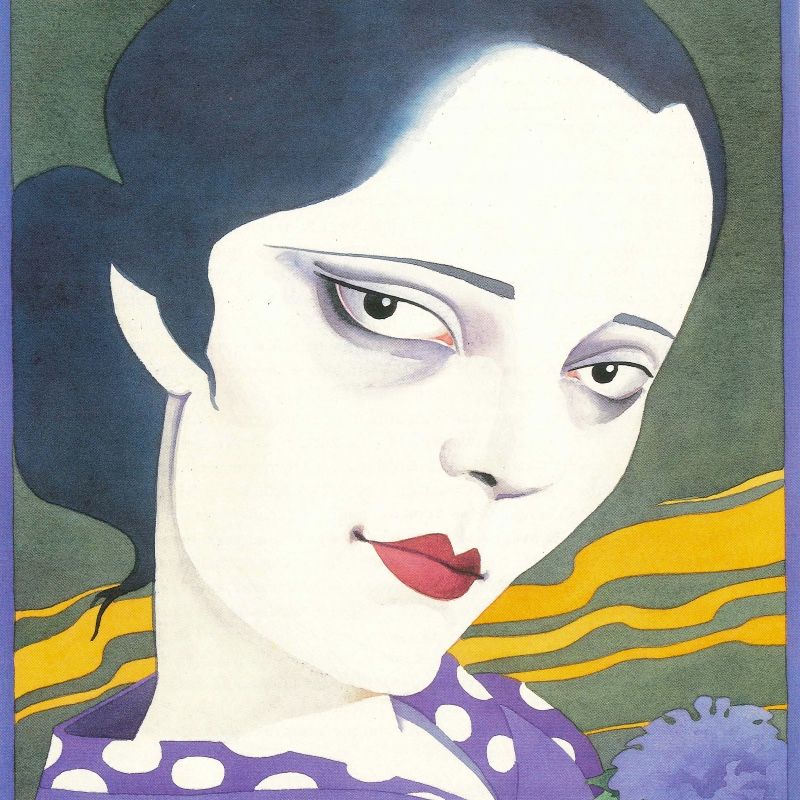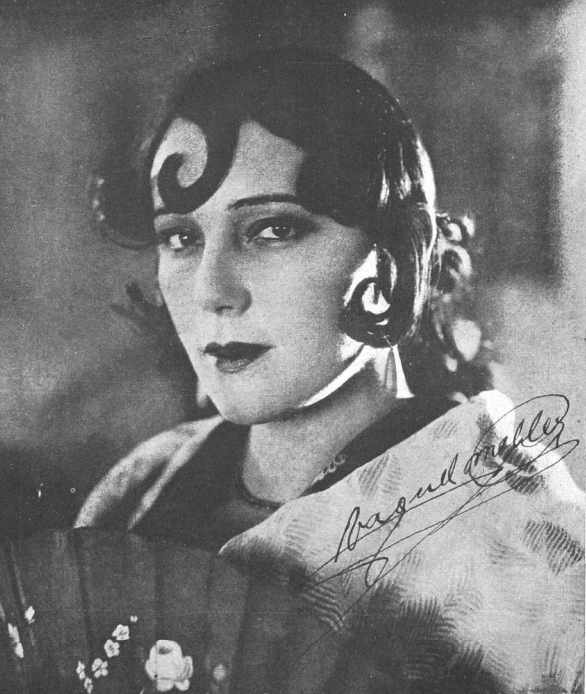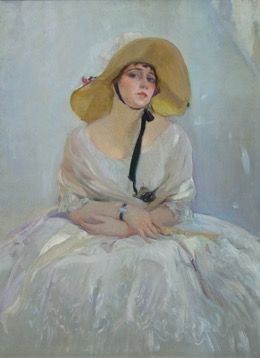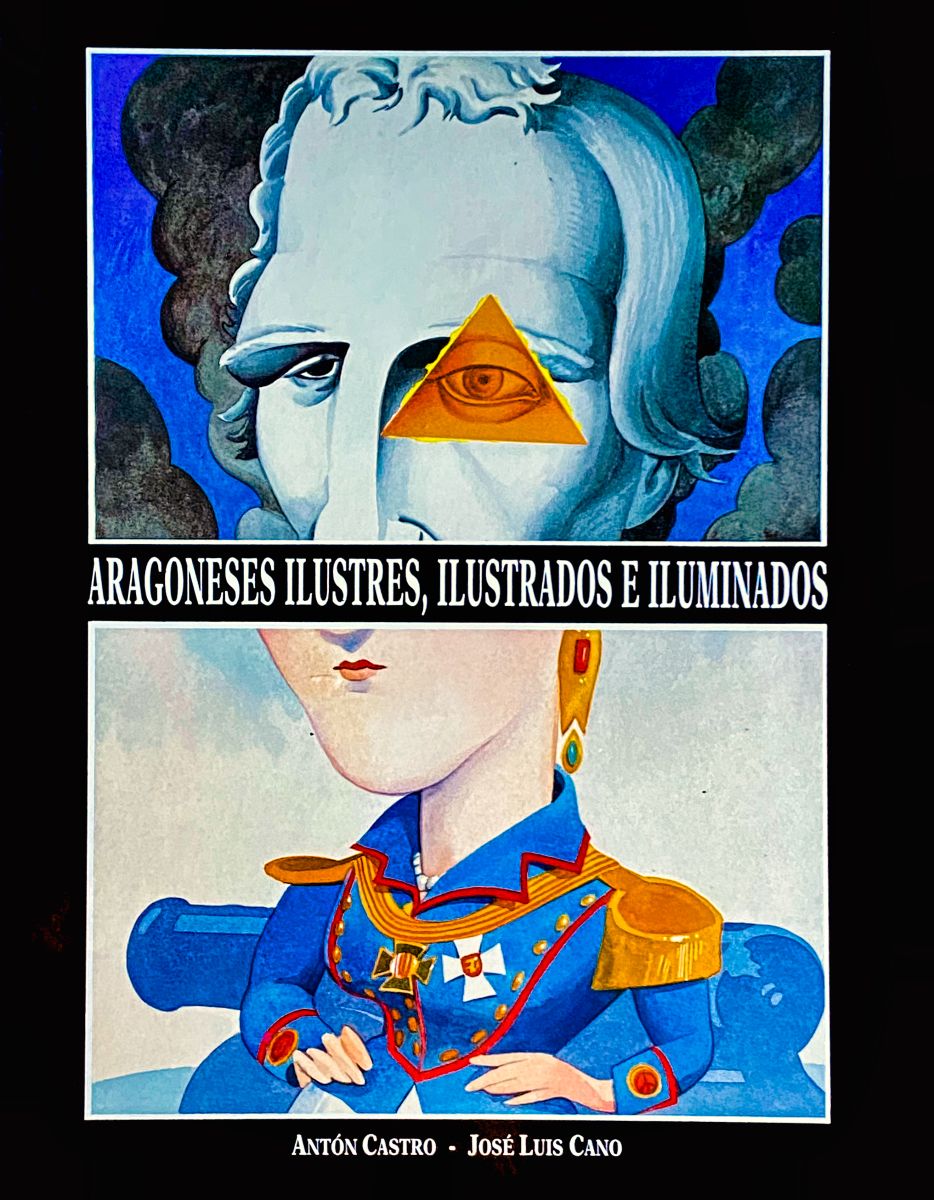Raquel Meller
The goddess of the stage
Tarazona (Saragossa), 1888 – Barcelona, 1962
At the end of the First World War in 1918, which devastated Europe as never before, and after a terrible pandemic, the so-called “Spanish flu”, sowed death all over the planet, both in the Old Continent and in North America a period of optimism began, a period of wanting to enjoy life, the “happy twenties”. Musicals, theatre and cinema, which was still silent, experienced a golden age. And in this festive atmosphere, new stars of show business emerged and captivated millions of spectators. One of the most famous of her time, for whom producers from all over the world were fighting and for whom they were prepared to pay extraordinary sums, was a girl born in Aragon from a very humble family who would become known worldwide by her stage name, Raquel Meller.

Life
Francisca Marqués López, Paca, was born in 1888 in Tarazona. There, her father was a blacksmith while her mother worked as a shop assistant in a grocery shop. Her mother’s poor health and the couple’s large number of children, eight, forced her parents to leave Paca in the care of a nun aunt, with whom she lived first in a convent in Tudela and then in another in Montpellier, in France. But as the girl did not want to follow religious life, when her aunt was sent to the Philippines she returned to her family, who had settled in Barcelona.
To bring some money home, Paca got a job in a sewing workshop. In this workshop, the dresses of some popular artists were made or altered. One of them, Marta Oliver, who heard her sing one day, liked the way she sang and convinced her to try her luck on stage. With his help, she made her debut in 1907 as a singer in a small theatre with a more artistic name than Paca, “La bella Raquel”, which she changed shortly afterwards to “Raquel Meller”, apparently in memory of a fleeting German love she had with the same surname. And soon that name began to be heard loudly in Barcelona’s nightclubs.
Work
Encouraged by the good reception, she gave up sewing and devoted herself fully to singing. She took singing lessons, as her sister Tina would also do, and looked for a new repertoire to perform, increasingly distant from the picaresque and indecorous songs of her beginnings. Cuplés and tonadillas, with catchy music and lyrics, came to predominate in his performances, which were advertised as cultured, moral and in good taste, so that his audience, now of all kinds, grew. He performed successfully in Madrid and toured all over Spain.
In 1911 she signed a fabulous contract with the Arnau theatre in Barcelona, with an already astronomical salary. His fame continued to grow. “Serious” classical composers wrote melodies for her. Books were published about her and intellectuals, writers, painters, sculptors, aristocrats and even King Alfonso XIII attended her performances. Raquel Meller did not have a great voice, but she made up for it with her expressiveness and her way of singing. Like an actress, she interpreted the songs in a theatrical way, she lived them, and in this way she dazzled the audience.

World artist
After the First World War, he presented his show in Paris and London. And the ovations were overwhelming. When his album El relicario was released, more than 100,000 copies were sold in the French capital alone. He made triumphant tours throughout Latin America. And also in the United States (New York, Philadelphia, Chicago, Boston, Baltimore, Los Angeles…), always singing in Spanish. And she even made the cover of the prestigious Time magazine. There was no more famous artist then.
The cinema was interested in her and, even though she was a singer, she made successful silent films, both in Spain and in France. It didn’t matter if her voice could not be heard, her expressive performances astonished the audience. The great British actress Sarah Bernhardt praised her in the newspapers and the legendary Charles Chaplin, author of the character of Charlot, did everything possible to hire her, but Raquel Meller, who lived a life of luxury, refused. Despite this, Chaplin would include the music of one of her songs, La violetera, as the main theme of his film Luces de la ciudad.
With the advent of sound films, Raquel Meller shot a new version of an old silent film of hers, Violetas imperiales, which was very well received. But when she was shooting another, in 1936, the Civil War broke out and all her plans collapsed. After the Civil War, the Second World War began, and then the post-war period. Show business, like everything else, was ruined. And when, some time later, it began to recover, fashions had changed.
Raquel Meller, who was no longer young, married for the second time and settled in Barcelona with the two children she had adopted. She returned to the stage, but her glory days were over. He worked less and less, until he finally retired. When she died in the summer of 1962, she had been “forgotten” for some time. However, her funeral was a massive one. A large crowd attended. The entire press published the news and tributes multiplied in memory of a woman from Aragon, who only a few years earlier had been one of the most acclaimed singers and actresses in the world.
References
- Javier Barreiro (1992): Raquel Meller y su tiempo. Zaragoza: DGA.
- María Dolores Calvo Romero (2004): Raquel Meller, una mujer, una artista. Zaragoza: DPZ.
- Antón Castro (1993): “Raquel Meller, el alma del cuplé”, en Aragoneses ilustres, ilustrados e iluminados(186-191). Zaragoza: Gobierno de Aragón.
- Enrique Gómez Carrillo (2009): Raquel Meller. Madrid: Reino de Goneril.
- Spanish Biographical Dictionary, Real Academia de Historia: https://dbe.rah.es/biografias/12541/francisca-marques-lopez
Teaching activities
Raquel Meller and the Spain of her time
During Raquel Meller’s childhood and youth, Spain and the rest of the world lived through a turbulent political and social period, which also saw a technological revolution like never before in history. In the most developed countries, the use of new inventions that would definitively change customs and ways of life began to spread: electricity, running water, the telephone, the radio, the automobile, aeroplanes… This period also saw the birth of other social phenomena, such as sports and psychoanalysis.
Chronology of the artist’s life and chronology of political and social events in Spain, from Raquel Meller’s birth to her golden age.
| 1888 Raquel Meller was born in Tarazona, Saragossa. | 1888 Barcelona Universal Exposition. | |
| Until 1900, education in Montpellier, with a nun aunt. | 1898 Colonial disaster. Loss of Cuba, Puerto Rico and the Philippine Islands. | |
| 1908 Debut in a modest music hall as a cuplé singer under the name of La Bella Raquel. | 1909 Tragic Week in Barcelona triggered by the sending of troops to Morocco. | |
| 1911 First star at the Arnau Theatre in Barcelona, as Raquel Meller, great success. In 1912 the record company Odeon hires her for her first recordings. | 1912 Assassination of Prime Minister José Canalejas. Liberal political reforms to put an end to caciquismo and electoral fraud are halted. | |
|
1914 – 1918 Raquel Meller’s career takes off. Performances all over the country and a large number of recordings. She premieres her two most emblematic songs, composed by José Padilla: El relicario and La violetera. They became popular all over the world. |
1914 – 1918 First World War. Neutral Spain. Economic and social consequences: increase in Spanish industrial production for the belligerent countries. Prices rise, not wages. Cost of basic necessities rises. Riots and labour disputes.
|
|
| 1919 – 1930 First triumphs in Paris and America. Successes in silent films: Imperial Violets and Carmen. 1926 Tours the USA. Meets Charlie Chaplin. Films four of his greatest musical hits in a short sound film in New York. The film was shown in 1927 and was the first time he was heard singing in Spanish in the world cinema. |
1919 – 1930 Period of economic and social crisis in Spain. Disaster of Annual in Morocco. Dictatorship of Primo de Rivera. Cultural renaissance in the first third of the 20th century. In literature: Generation of ’27. In music: Isaac Albéniz, Enrique Granados, Joaquín Turina and Manuel de Falla. In painting: Pablo Picasso, Salvador Dalí and Joan Miró. In cinema: Luis Buñuel.
|
Look at the two columns Do you think the artist’s life is affected by historical events in the country? Why?
What is the cuplé? Origin and evolution
In the mid-19th century, the musical revue appeared. This was a succession of musical numbers with a common storyline whose origins were in France and the United States. Until then, the only theatrical entertainment with music was opera or zarzuela.
Over time, the musical numbers that triumphed among these musical numbers were those with a mischievous content, with songs with double entendre lyrics and performers from the lower classes wearing suggestive dresses that revealed part of their bodies. For the more conservative, they were a threat to good manners. But they were a huge success. The cuplé and the tonadilla were the stars of popular music in the first half of the 20th century, with singers as admired as La Fornarina, Tórtola Valencia, La Camelia, La Goya… Among them all, Raquel Meller stands out, who evolved towards a different type of song, “cultured, moral and in good taste”, with dramatic plots, which appealed to all kinds of audiences.
Have you ever listened to a cuplé? Do some research on the internet to find out what kind of song it is. Ask your grandparents or someone older than you if they know the one you hear in the links below. The first one is with the voice of Raquel Meller herself, remastered. The second is the same song performed by a more modern singer.
What do you think of the lyrics? It reflects the life of the time in which it was written. The Spain of its time.
Do you think it could be successful today? Could it be turned into a rap? Do you dare to try it?
A planetary fame
Raquel Meller was famous all over the world. Painters, writers, musicians and actors from all countries praised her musical and film performances.
Read some of the reviews that were published about her:
Juana José de Soiza: At the beginning you are chilled by that little ivory girl. Trembling. Pale. Eyed. She has the face of a Byzantine virgin… She comes on stage as if she were walking down the street… She begins to sing as if she were not singing for the audience. She sings for herself, as softly as she converses. You are astonished that this girl has the obligation to enthuse you. Is this the celebrated, soulful British audience? It can’t be… She sings for herself as if she were singing sotto voce. And as she sings, you become more and more interested in her novel silhouette. You see her face transform without wrinkling. She smiles without opening her mouth. He shudders with horror without grimacing. It seems to you that she is screaming and talking in secret. She cries and cries with tears… What is that? Her voice then stretches, lengthens, reaches the farthest corners of the theatre and crosses the foyer without Rachel having stopped singing softly… It seems to you that she is singing in your ear, confidentially. And that is the secret of her art. You believe that this pale, nervous little woman in a cheap dress, who speaks to you of the sorrows she suffers, the joys she enjoys, the love she desires, is there in the theatre for you alone.
Álvaro Retana: What spirituality in her appearance as she unwraps the cantabile and, above all, as she makes a mute! She crossed the stage like one of those creatures we only see in dreams, in a reality that has vanished like smoke, the delicacy with which she wrapped herself in a lace shawl and the sorrowful tenderness with which she slowly withdrew! There is no pen to describe the emotion that the audience experienced…
Sebatián Gasch: …she triumphed all over the world singing in Spanish. No other artist has earned her fame. No one has done for Spain what Raquel has done just by saying her tonadillas. So far this century, no other has managed to elevate the song to the level of a rigorous art, an art made of small and very deep things, of mystery, and also of luminosity. Raquel has been unique.
Percy Hammond: It matters little whether or not you understand Spanish; the force of the expression is so tangible and real that it holds the whole audience spellbound.
And some of the comments dedicated to her by important personalities:
Armando Palacio Valdés: I owe Raquel Meller more than one debt. In sad hours of tedium and disenchantment, when the world seemed deserted and empty, I went to the theatre to see her perform on the stage. Her singular beauty, her gentle, ingenuous, serene art, the angelic timbre of her voice, the candid malice of her gestures, refreshed my soul; joy blossomed in my heart and I was reconciled with life.
Cecil B. de Mille: She is the mask of tragedy.
Sarah Bernhardt: She is an artist of great breed. I want to publicly record my eternal gratitude for the unforgettable hour I owe her.
Aldous Huxley: She is the most refined, the most remarkably aristocratic performer I have ever seen. It is the language of passion.
Do you know who Armando Palacio Valdés, Cecil B. de Mille, Sarah Bernhardt and Aldous Huxley were? Find information about their lives and the importance they had in their respective fields.
Raquel Meller, film star
It is paradoxical that Raquel Meller, who achieved success as a singer, reached her peak of popularity at the time as a silent film actress.
In the 1920s, records were in limited circulation and radio had reached only a few homes. Nevertheless, millions of people flocked to the cinemas to watch the silent faces of the great stars of celluloid: Rudolph Valentino, Gloria Swanson…
This phenomenon was not new. Admirers and fans already existed in the theatre, opera and variety shows. The expressiveness with which she accompanied her performances on stage facilitated Raquel Meller’s triumph as an actress. She interpreted the songs in a theatrical way, she lived them. And just as she dazzled in the theatres, she fascinated on the big screen, but with a much greater impact.
Find out which were his main films, where he filmed them and how successful they were. Did he star in any sound films?
Watch clips from these films and comment on what you think of her as an actress.
The recorded voice
At the end of the 19th century, the first experiments began with the recording of sound and its subsequent reproduction. The first systems were mechanical, such as the phonograph and the gramophone.
Find information about these inventions When were they invented? Who invented them? How did they work?
Between 1920 and 1925, the use of electricity to record and reproduce sound was introduced – completely replacing mechanical recording – and the three basic components of the modern system were incorporated: The microphone, which picks up the sound signal and converts it into electrical impulses. The amplifier, which increases the power of the electrical signal coming from the microphone. And the loudspeaker, which receives the electrical signal from the amplifier and transforms it back into sound waves.
Raquel Meller began to record her songs in 1912 with the mechanical system, still without using microphones, in front of large loudspeakers that picked up the sounds and transmitted them to an adjoining room, where they were recorded on wax cylinders, which were later transferred to discs made of paste. Raquel Meller recorded more than 200 titles using this procedure. She would later record some of her most popular titles again with the electric system.
Do you think that the evolution in recording systems could have favoured Raquel Meller’s artistic career? Explain why.
Its decline and legacy
During her long artistic career Raquel Meller contributed to countless charities in Spain, France, Belgium, the United Kingdom, the United States and other countries. Among her most beloved possessions she kept dedications signed by the kings of Spain, England and Sweden, by the presidents of France, Argentina, the United States, etc., as well as the apostolic blessings of Popes Pius XI and Pius XII and many other recognitions given to her over the years for her philanthropic work.
However, after the Civil War and the Second World War, Raquel Meller’s shows and films gradually lost the attention of the general public. The privileged place she had held for so long was now shared by new singing stars, including Imperio Argentina, Estrellita Castro and Concha Piquer. A new musical genre called copla had become firmly established in Spain in the popular taste. Little by little Raquel disappeared from public life and soon both she and the cuplé were considered anachronistic.
She went on to record more than 400 songs, among which El relicario and La violetera became universal. She made numerous films all over the world, especially in France and Spain, among which the following stand out:
Los arlequines de seda y oro (Ricardo de Baños, 1919), later recast as La gitana blanca.
Rosa de Flandes (Henry Roussell, 1922).
Imperial Violets (Henry Roussell, 1923).
The Promised Land (Henry Roussell, 1924).
Night Watch (Marcel Silver, 1925).
Nocturne (Marcel Silver, 1926).
Carmen (Jacques Feyder, 1926).
La venenosa (Roger Lion, 1928).
Tarde de Corpus, La mujer del torero, Flor del mal and El noi de la mare (1930), for the American Fox Movietone.
Violetas imperiales (Henry Roussell, 1932), sound version.
Lola Triana (unfinished, 1936).
She was admired by intellectuals and artists and served as a model for the most famous Spanish painters of her time, such as Romero de Torres and Joaquín Sorolla.

Portrait of Raquel Meller, by Joaquín Sorolla
Illustrious, enlightened and enlightened Aragonese people
Download from this link the PDF of the publication Illustrious, enlightened and enlightened Aragonese people, by Antón Castro and José Luis Cano, published by the Government of Aragón in 1993.


DIRECCIÓN GENERAL DE POLÍTICA LINGÜÍSTICA
Departamento de Educación, Cultura y Deporte
Parque Empresarial Dinamiza (Recinto Expo)
Avenida de Ranillas, 5D - 2ª planta
50018 Zaragoza
Tfno: 976 71 54 65
Colabora:



